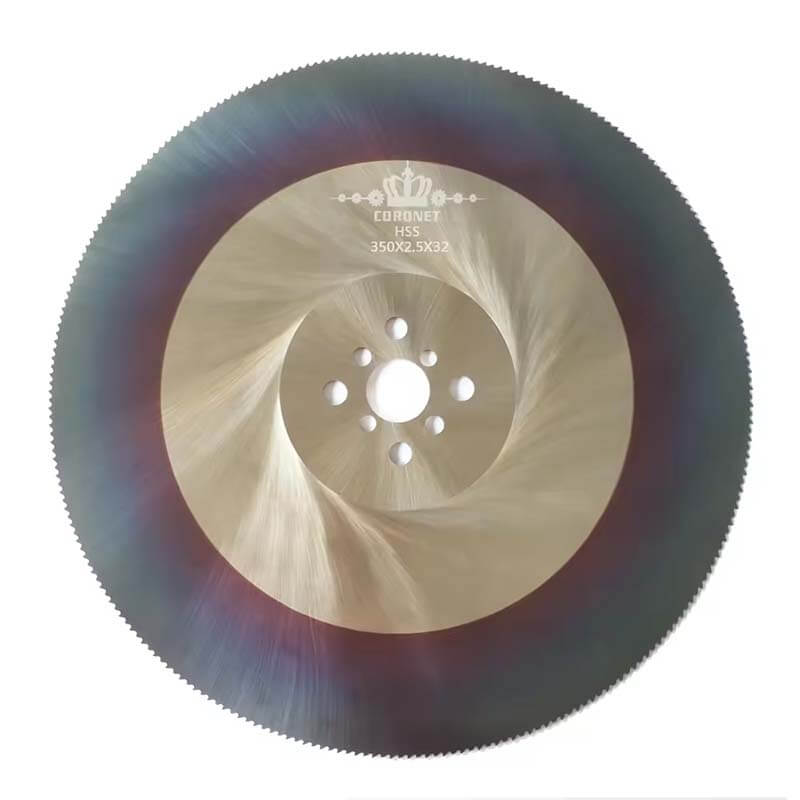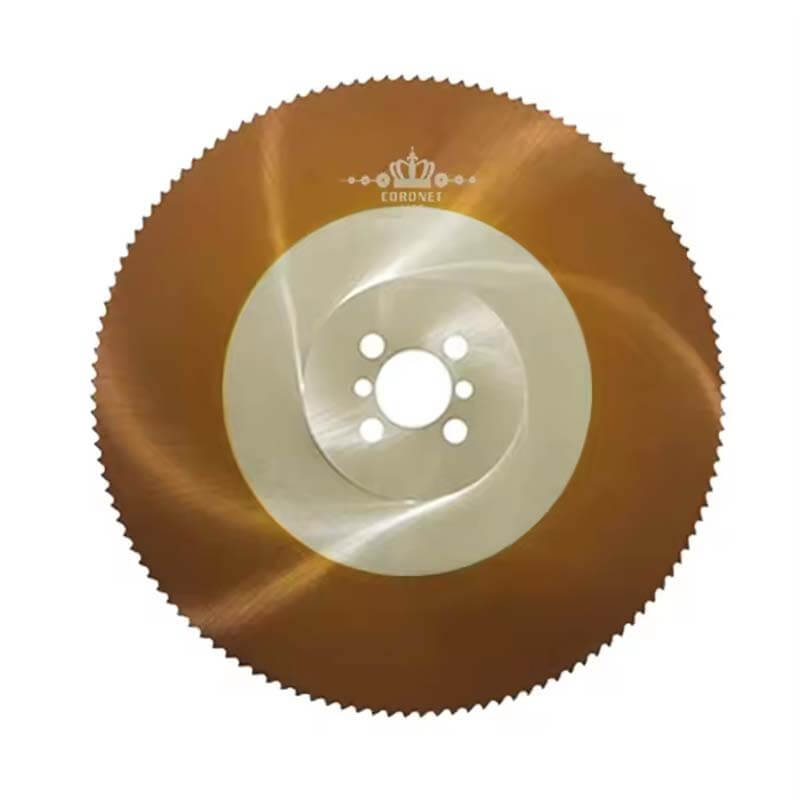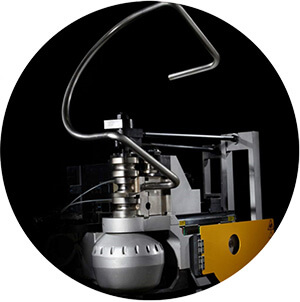The Basics of Circular Saw Blade for Metal
The circular saw blade for metal is mainly used to cut metal tubes by circular sawing machine. According to different cutting materials, the types of circular saw blades may vary in order to achieve the best cutting results. Here are the basics of metal cutting circular saw blades, I hope this will help you to work better with your sawing job.
Understand the Parameters Marked on the Metal Circular Saw Blade

350: The diameter of the saw blade
2.5: The thickness of the saw blade
32: The size of the inner hole
The Function of the Tooth Pitch of a Metal Circular Saw Blade
The pitch of a metal circular saw blade (the distance between teeth) plays a key role in the cutting performance and effect of the saw blade. The following are the main functions and effects of the pitch:
Cutting Efficiency
Generally, the circular saw metal cutting blade with a large pitch is suitable for cutting the thicker and harder material, because the space between each tooth is larger and they can effectively remove more chips, prevent blockage, and improve cutting efficiency while cutting.
The metal cutting circular saw blades with small pitch are suitable for cutting thinner and softer materials because the smaller pitch can provide a smoother cutting surface, reducing the burrs and uneven cuts at the cutting edge.
Cutting Accuracy
Cutting by a circular saw metal blade with a large pitch may result in a rough cutting surface, so it is not suitable for the cutting job with high precision. However, cutting with a small pitch saw blade will provide you with a smoother cutting edge with higher cutting accuracy.
Cutting Speed
A circular saw blade with a large pitch is suitable for fast cutting because the feed volume of each cut is large, and more material can be cut in a shorter time. Cutting with a small tooth pitch at a slower speed can provide a more stable and fine cut.
Chip Disposal
Using large tooth pitch metal cutting circular saw blades can have more space to contain and discharge the chips, reducing the risk of chip jams, especially when cutting thicker materials. But cutting with a small tooth saw blade, it is easier to accumulate chips and needs to be cleaned frequently.
Saw Blade Life
The circular saw blades with large tooth pitches are generally used to cut hard materials, so the tooth may wear faster. But a small tooth pitch is used to cut soft material, so the tooth wears slower and this can extend the service life saw blade.
In general, the tooth pitch of metal cutting circular saw blade is a very important parameter when choosing the proper type. It depends on various factors, including cutting materials, material sizes, and processing requirements. If you are not sure which type of metal circular saw blade can meet your production needs, ask our expert Now!
How to Calculate the Pitch of a Metal Circular Saw Blade?
The calculation formula of the tooth pitch is closely related to the diameter and number of teeth of the metal circular saw blade. The calculation formula is:
Tooth Pitch = Saw Blade Diameter X π / Teeth Number
For example: if your saw blade diameter is 315mm and teeth number is 180, your tooth pitch will be:
315 X 3.14 / 180 = 5.5mm
Ok, the chip capacity can be estimated from the tooth pitch:
Chip Load Per Tooth = Cutting Distance X Feed Per Teeth

How Many Teeth Do I Need on My Circular Saw Blade?
There isn’t a one-size-fits-all answer to how many teeth a circular saw blade needs for cutting material. The right number of teeth depends on various factors, such as the type of material you’re cutting, its size, the model of your tube cutting machine, and the precision required for the cut. To select the most suitable circular saw blade for your needs, we recommend consulting with our experts. Below is a guideline for the number of teeth based on the size of the material, but keep in mind that this is not set in stone. It’s essential to assess each situation individually for the best results.
Saw Blade Teeth Number Reference Table | ||||||
| Tube Thickness/Blade Size | 250 | 275 | 300 | 315 | 350 | 400 |
| 0.6-0.8mm | 260T | 280T | 300T | 320T | 340T | 360T |
| 0.8-1.0mm | 240T | 260T | 280T | 300T | 320T | 340T |
| 1.0-1.3mm | 220T | 240T | 260T | 280T | 300T | 320T |
| 1.3-1.5mm | 200T | 220T | 240T | 260T | 280T | 300T |
| 1.5-2.0mm | 180T | 200T | 220T | 240T | 260T | 280T |
| 2.0-2.5mm | 160T | 180T | 200T | 220T | 240T | 260T |
| 2.5-3.0mm | 140T | 160T | 180T | 200T | 220T | 240T |
| 3.0-3.5mm | 120T | 140T | 160T | 180T | 200T | 220T |
| 4.0-4.5mm | 100T | 120T | 140T | 160T | 180T | 200T |
| 5.0-6.0mm | 90T | 100T | 120T | 140T | 160T | 180T |

Denis Lau
Denis Lau has 20 years of work experience in the metal processing industry. His major in university was mechanical engineering, and after graduation, he started from the bottom of the workshop, gaining extensive hands-on professional experience and the ability to tackle challenges from various industries.


